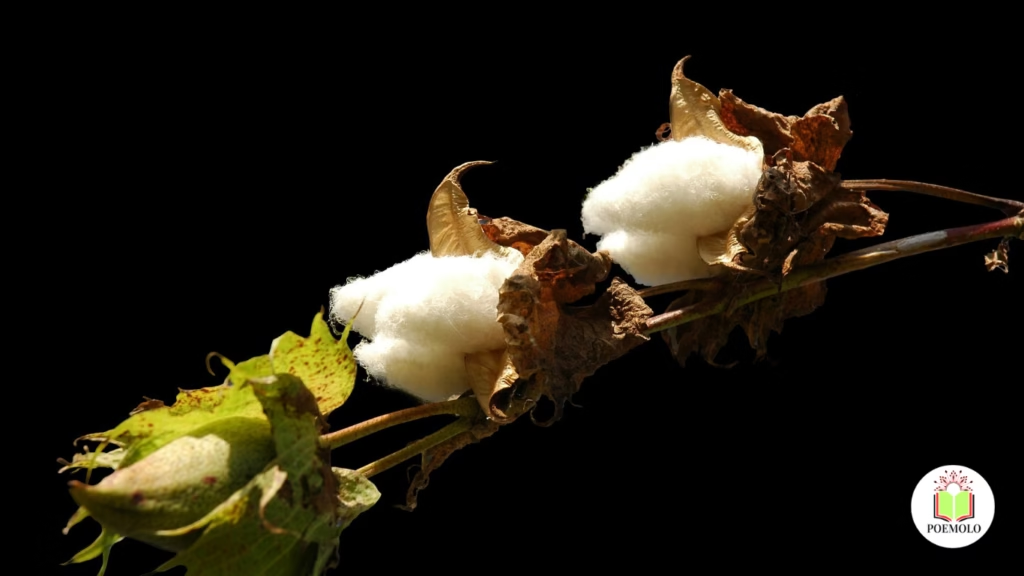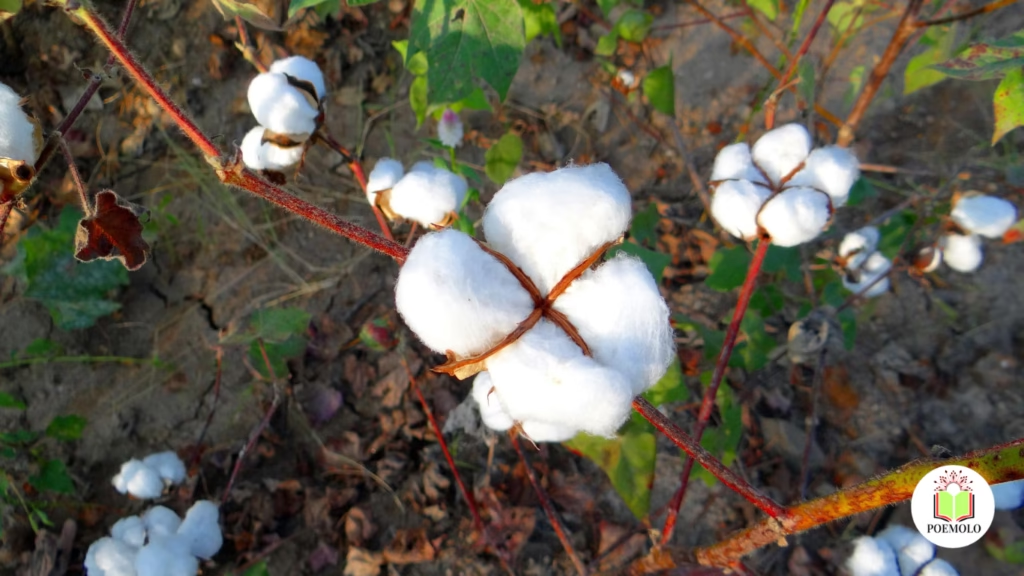The cotton gin is one of the most significant inventions in American history. Invented by Eli Whitney in 1793, it revolutionized the cotton industry and had a profound impact on the economy, society, and the development of the Southern United States.
But beyond its historical significance, the cotton gin has also served as an inspiration for creative expression. Writing an acrostic poem about the cotton gin is a unique and educational way to explore its legacy while honing your poetry skills.
In this article,I’ll guide you through the process of creating an acrostic poem about the cotton gin, providing helpful tips and techniques to inspire your creativity. Whether you’re a student looking for a fun history assignment or an enthusiast of poetry and history, crafting an acrostic poem can be an enjoyable and insightful way to engage with the past. So, let’s explore how to combine history, poetry, and creativity into a compelling acrostic poem.
What is an Acrostic Poem?

Before we dive into writing an acrostic poem about the cotton gin, it’s essential to understand what an acrostic poem is. An acrostic poem is a type of poetry in which the first letter of each line spells out a word or message when read vertically.
This form of poetry is simple yet powerful, allowing the poet to focus on a central theme while creating an aesthetically pleasing and structured poem.
For example, if you were writing an acrostic poem about the cotton gin, each letter of the phrase “COTTON GIN” would begin a new line of the poem. This type of poem can also include multiple lines, each reflecting different aspects of the subject. The versatility of acrostic poems makes them an excellent choice for exploring historical events, figures, or inventions like the cotton gin.
In an acrostic poem, you can explore a variety of themes, such as technological advances, cultural shifts, and personal or collective impacts. With a device like the cotton gin, there are many facets of history to draw upon, which can make this form of poetry not only creative but also deeply insightful.
Acrostic poem about the cotton gin:
Creating change with gears that spin,
Opening doors where fields begin.
Thousands of hands once slow and strained,
Turned to machines that eased the pain.
Onward it moved, the engine of the land,
Never before had such power been planned.
Generations grew in the cotton’s shade,
Inventions that built, yet debts were made.
Never forget, the cost was steep,
In the fields where freedom did not sleep.
Analysis Table about the cotton gin:
| Line | Analysis | Explanation |
| Creating change with gears that spin | Theme: Innovation & Progress | The line represents the transformative power of the cotton gin and the technological advancement it brought to cotton production. The “gears that spin” symbolize the mechanical nature of the gin. |
| Opening doors where fields begin | Theme: Opportunity & Expansion | The cotton gin opened new opportunities for large-scale cotton farming. “Fields begin” refers to the expansion of cotton plantations across the South. |
| Thousands of hands once slow and strained | Theme: Labor & Hardship | This line highlights the intense manual labor that was required before the cotton gin. It draws attention to the toll on workers who labored long hours to separate cotton fibers from seeds. |
| Turned to machines that eased the pain | Theme: Efficiency & Relief | The introduction of the cotton gin reduced the strain on workers by automating the labor-intensive process of cotton separation. The “pain” refers to both physical strain and economic difficulty before the invention. |
| Onward it moved, the engine of the land | Theme: Industrial Progress | “Engine of the land” suggests that the cotton gin became the driving force behind the agricultural economy, revolutionizing how cotton was harvested and processed. |
| Never before had such power been planned | Theme: Unprecedented Change | This line emphasizes the groundbreaking nature of the invention, signaling how the cotton gin had a scale and impact previously unseen in agricultural technology. |
| Generations grew in the cotton’s shade | Theme: Growth & Impact | The line refers to the widespread success of cotton farming, which shaped the livelihoods of generations in the South. It also alludes to the growth of slavery, as cotton plantations depended on forced labor. |
| Inventions that built, yet debts were made | Theme: Consequences & Moral Complexity | While the cotton gin facilitated economic growth, it also led to the deepening of slavery in the South. The “debts” refer to the moral and social costs of relying on slavery to fuel the cotton economy. |
| Never forget, the cost was steep | Theme: The Cost of Progress | The final line serves as a reminder of the human cost of industrialization. While the cotton gin led to economic prosperity, it also contributed to the exploitation and suffering of enslaved people. |
| In the fields where freedom did not sleep | Theme: Slavery & Injustice | The concluding line underscores the key theme of the poem: while the cotton gin symbolized industrial progress, it also perpetuated the systemic injustice of slavery. The reference to “freedom did not sleep” suggests that the fight for freedom was constant, even as the cotton economy thrived. |
Key Literary Devices Used:
- Alliteration: The use of similar sounds at the beginning of words, like “gears that spin” and “turn to machines,” adds rhythm to the poem and draws attention to key images.
- Metaphor: “Engine of the land” serves as a metaphor for the cotton gin, suggesting it was the driving force behind the Southern economy.
- Imagery: The lines evoke strong visual and emotional images, such as “gears that spin” and “fields where freedom did not sleep,” which help readers connect with the poem’s themes on a deeper level.
- Juxtaposition: The poem contrasts the technological advancement of the cotton gin with the human cost of slavery, highlighting the complex legacy of the invention.
The Historical Significance of the Cotton Gin
To effectively write an acrostic poem about the cotton gin, it’s important to first understand its historical context. The cotton gin, short for “cotton engine,” was a mechanical device that quickly and efficiently separated cotton fibers from the seeds.
Related article: How to Write a Poem on Mother
Before the invention of the cotton gin, cotton production was a labor-intensive process, and the separation of the cotton fibers from the seeds was done by hand, a task that was slow and costly. Whitney’s invention drastically reduced the time and labor required for this process, which in turns led to a dramatic increase in cotton production.
This increase in productivity had far-reaching consequences. While it helped to make cotton the dominant crop in the South, it also led to an expansion of slavery as plantation owners relied on enslaved people to cultivate and harvest the cotton. This, in turn, exacerbated the tensions that led to the American Civil War.
Understanding the social, political, and economic impact of the cotton gin allows you to create a more meaningful and thoughtful acrostic poem. When writing about the cotton gin, you can explore themes like innovation, industrial progress, labor, and the complex historical legacy of the South.
In the years following its invention, the cotton gin became the backbone of the Southern economy. As cotton became more profitable and easier to harvest, the demand for cheap labor increased.
This reliance on enslaved labor led to the deepening of the entrenched system of slavery in the South. At the same time, the economic success of the cotton industry contributed to the wealth of the Southern elite and the expansion of the United States as a global exporter of cotton.
Yet, the cotton gin did not come without its darker side. The increased efficiency of cotton production allowed plantation owners to cultivate larger areas of land, further entrenching the system of slavery that was deeply tied to the Southern economy.
This reality makes the cotton gin a symbol of progress, but also of the moral and ethical struggles that defined the United States in the 19th century.
When crafting your acrostic poem, you can reflect on both the positive and negative aspects of the cotton gin’s impact on society. Its invention ushered in a new era of economic growth, but it also perpetuated injustice and human suffering. This duality offers a rich emotional landscape to explore in your poem.
Tips for Writing an Acrostic Poem about the Cotton Gin

Creating an acrostic poem about the cotton gin offers an opportunity to delve into history, creativity, and even societal reflection. Here are some steps to guide you as you compose your poem:
1. Brainstorm Key Themes and Ideas
Before you start writing, think about the most important aspects of the cotton gin and what it represents. Some potential themes to explore could include:
- Innovation: The cotton gin was a groundbreaking invention that revolutionized agriculture.
- Efficiency: How it made cotton production faster and more efficient.
- Impact on Slavery: The device’s role in the growth of slavery in the American South.
- Economic Change: The role the cotton gin played in shaping the economy of the United States.
- Industrial Revolution: How the cotton gin represents a turning point in industrial advancements.
Brainstorming these ideas will help you build a foundation for your acrostic poem. You can also jot down any specific events, people, or emotions related to the cotton gin that you’d like to incorporate into your poem.
2. Start with the Letters of “COTTON GIN”
An acrostic poem’s structure is defined by the letters of the chosen word or phrase. In this case, your lines will start with the letters C, O, T, T, O, N, G, I, and N. Try to think about how each of these letters can represent a key aspect of the cotton gin or its effects.
For example:
- C could stand for “cotton” itself, the crop that the invention helped to mass-produce.
- O could stand for “opportunity,” highlighting how the cotton gin created new economic opportunities for Southern farmers.
- T could represent “trouble,” referencing the social and political issues that arose due to increased reliance on enslaved labor.
3. Incorporate Imagery and Emotion
An acrostic poem is a great way to combine historical facts with emotional and vivid imagery. Think about how you can bring the cotton gin’s history to life through descriptive language. For example, you might describe the whirring of the machine or the exhaustion of workers in the cotton fields. Imagery like this adds depth and engagement to your poem.
Consider using sensory details, such as sounds, sights, and even smells, to evoke a more immersive experience for your readers. These elements will create a strong emotional connection to the history of the cotton gin and its consequences.
4. Focus on Rhythm and Flow
Even though acrostic poems are structured by specific letters, it’s important to ensure your poem flows smoothly. Try to vary your line lengths and use different poetic devices, such as rhyme, alliteration, or metaphor, to give the poem rhythm.
Related article: The Power of Poemac: How Poetry Connects Hearts Across Cultures
Don’t be afraid to experiment with different styles of acrostic poetry. You can create a traditional acrostic where each line begins with a letter from the word, or you can play with a more freeform structure that still emphasizes the theme of the cotton gin. The key is to balance creativity with historical accuracy.
5. Revise and Edit
Once you’ve written your acrostic poem, take some time to revise it. Look for areas where you can improve clarity, flow, or imagery. This step will help you refine your poem and make it even more impactful.
It’s always a good idea to read your poem aloud to get a sense of how it sounds. Does it have a natural rhythm? Are there places where you can enhance the emotional impact? Revising your poem allows you to take it from good to great.
Sample Acrostic Poem about the Cotton Gin
Let’s take a look at an example acrostic poem about the cotton gin to see how these steps can come together:
Crafting a tool of steel and might,
Opening doors to the future’s light.
Turning slow labor into swift ease,
Transforming fields with mechanical speed.
On the plantations, cotton grows in abundance,
Now harvested quicker, thanks to one invention.
Great changes ripple through the land,
Increasing profits, as wealth expands.
Never forgetting the price it cost—
For freedom was lost and many lives were tossed.
Why Use an Acrostic Poem to Explore the Cotton Gin?
Using an acrostic poem to explore the cotton gin has many benefits. First, it offers a creative and artistic way to understand and communicate historical events. The cotton gin was not only a marvel of engineering, but also a significant turning point in American history, with far-reaching implications for slavery, the economy, and the social fabric of the nation.
Writing an acrostic poem about the cotton gin allows you to engage with this history in a reflective and thoughtful manner.
Additionally, acrostic poems are a great tool for students and educators. They encourage critical thinking, creativity, and historical analysis, all of which are key skills in today’s educational landscape. By breaking down the term “cotton gin” into individual letters, you are forced to consider its significance from multiple angles, whether that’s technological, social, or economic.
Conclusion
Writing an acrostic poem about the cotton gin is a powerful way to reflect on one of the most important inventions in American history. By combining historical knowledge with creative expression, you can craft a poem that not only educates but also inspires others to explore history through the lens of poetry.
Whether you’re studying for an exam, working on a history project, or simply looking for a fun and meaningful way to engage with the past, an acrostic poem offers a unique perspective on the significance of the cotton gin.
As you embark on your poetic journey, remember that an acrostic poem is just one of many ways to express your thoughts on historical events. The process allows you to not only connect with the past but also enhance your creative writing skills. The cotton gin may have changed the world, but poetry can continue to preserve and reflect on its impact for generations to come.





